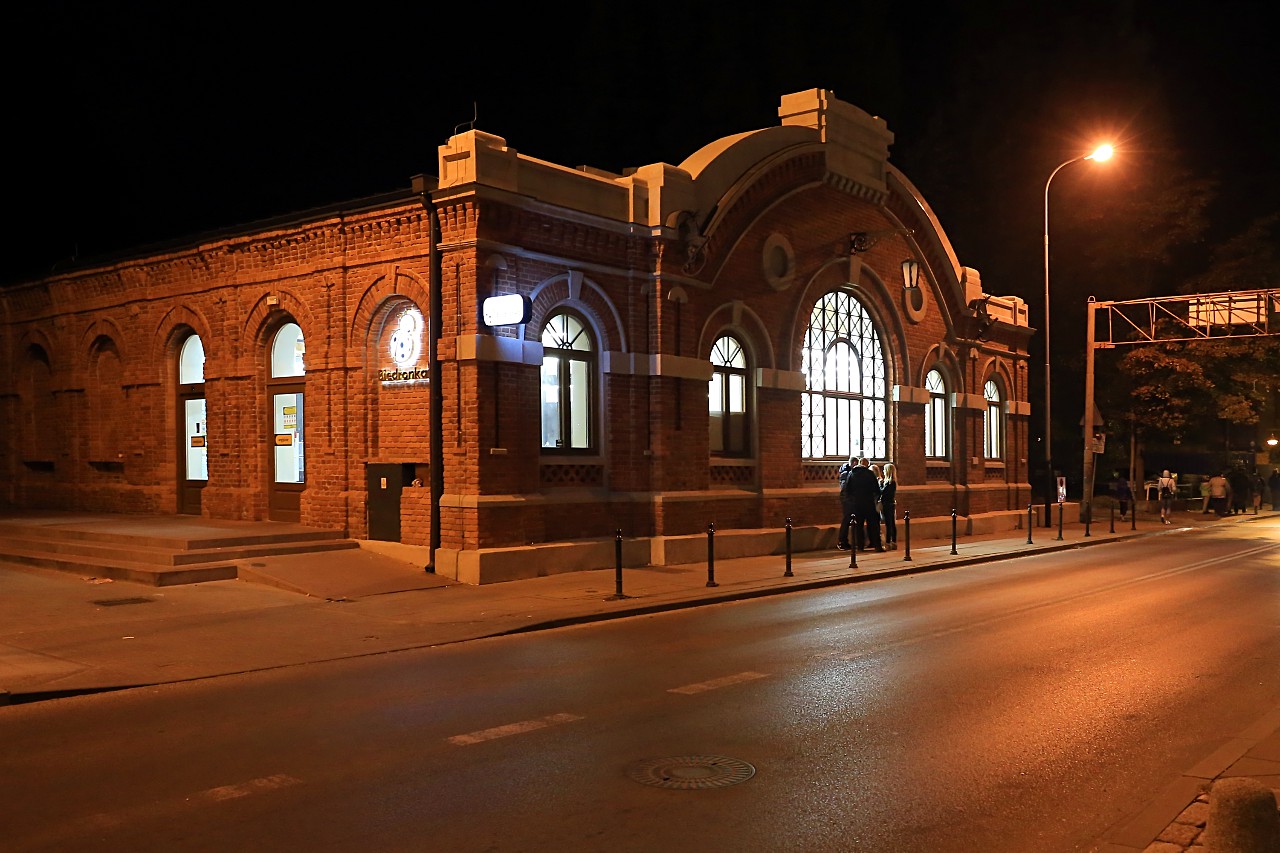Night Lodz. Manufaktura Shopping and Entertainment Complex
To the west of the Old Town Park is a shopping and entertainment complex created on the territory of the former textile factory of Israel Poznański.
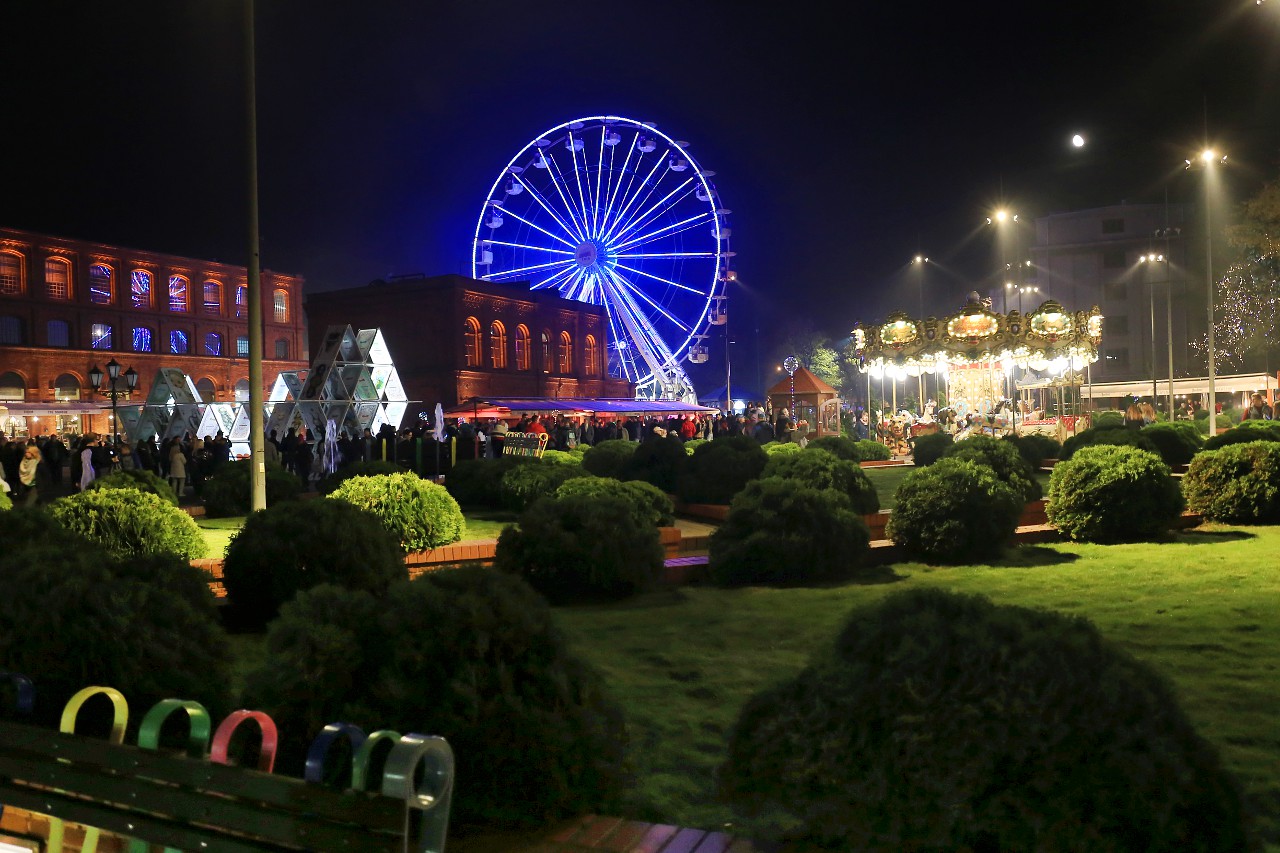
The history of the factory began in 1871 with the acquisition of land plots, at the end of the 19th century there was a production complex with an area of about 30 hectares with weaving, spinning, bleaching, dyeing and finishing shops.
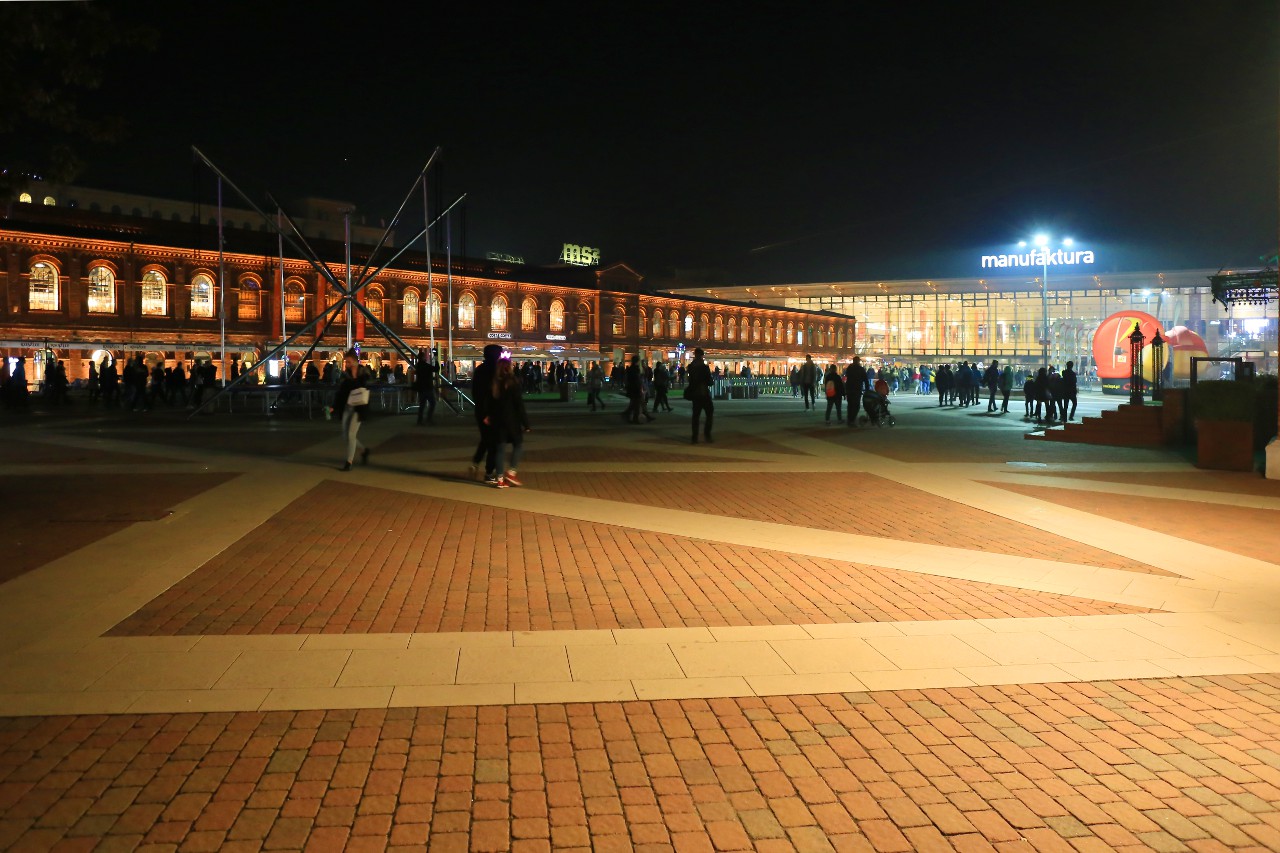
In addition, a repair and mechanical workshop, a construction site, a gas plant, a fire station, warehouses, a railway line and a locomotive depot, residential buildings for workers, a canteen and a club were built on the territory.

The Poznański factory reached its greatest prosperity in the years before the First World War. During the war, a significant part of the male population was mobilized into the army and women joined the weaving machines. This marked the beginning of emancipation in Poland.
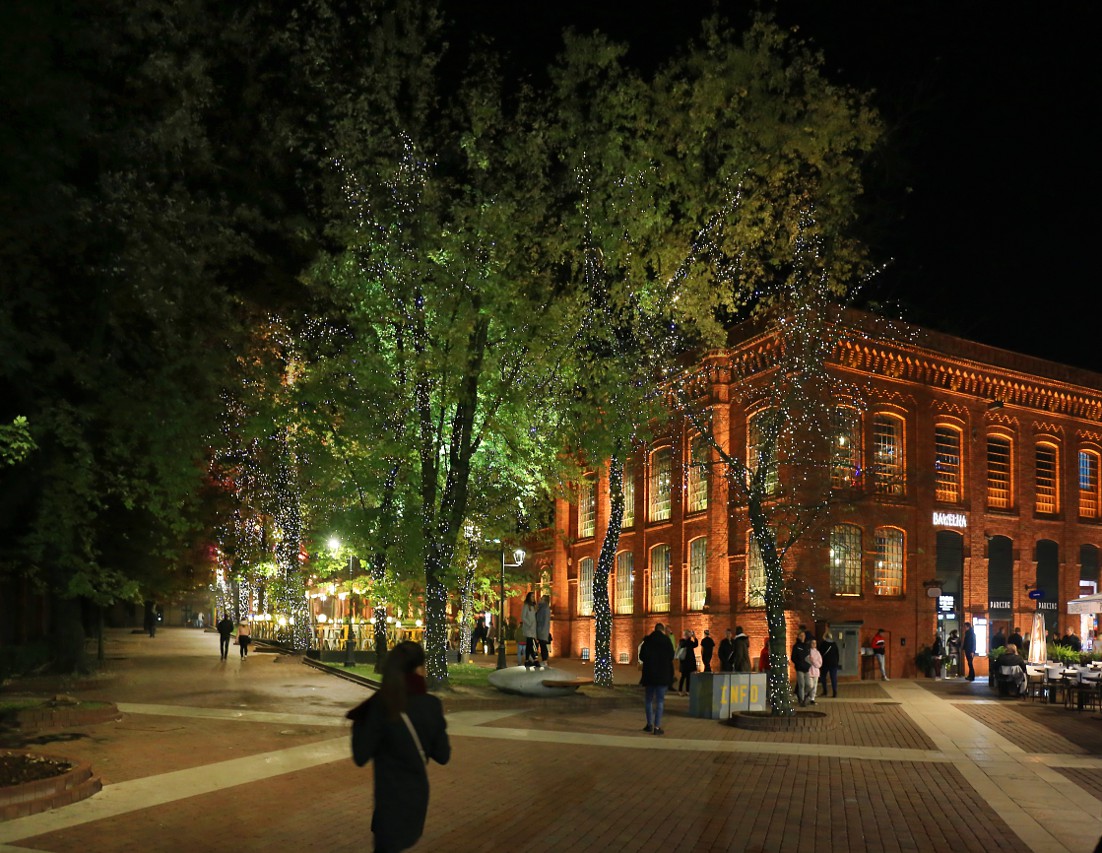
In the interwar period, the factory's business went much worse, as the eastern markets were lost as a result of the colonial collapse. In the thirties, the company was on the verge of bankruptcy, and kept afloat only thanks to the investment of Italian banks, which appointed external management.
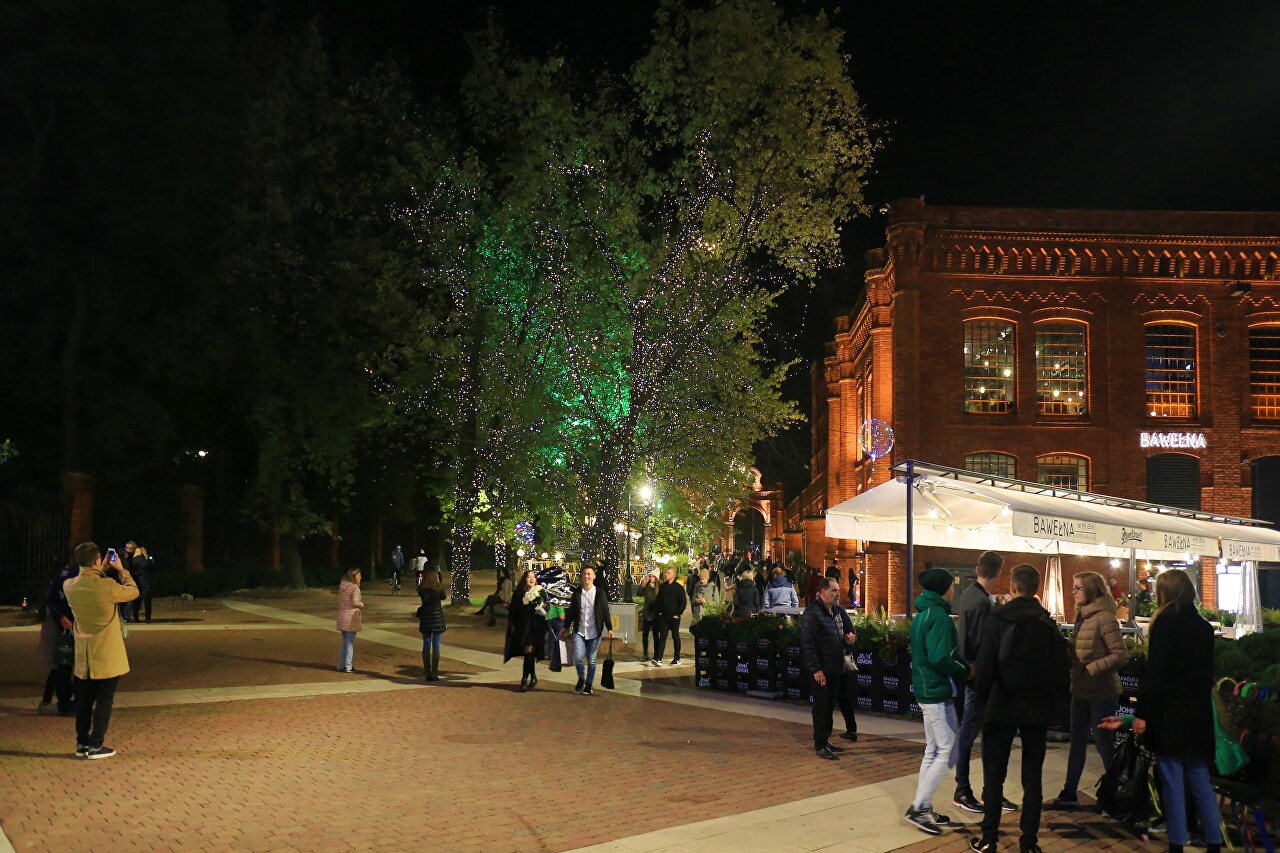
After the Second World War, power in the country passed to the Communists and the factory was nationalized and operated under the trademark Poltex.
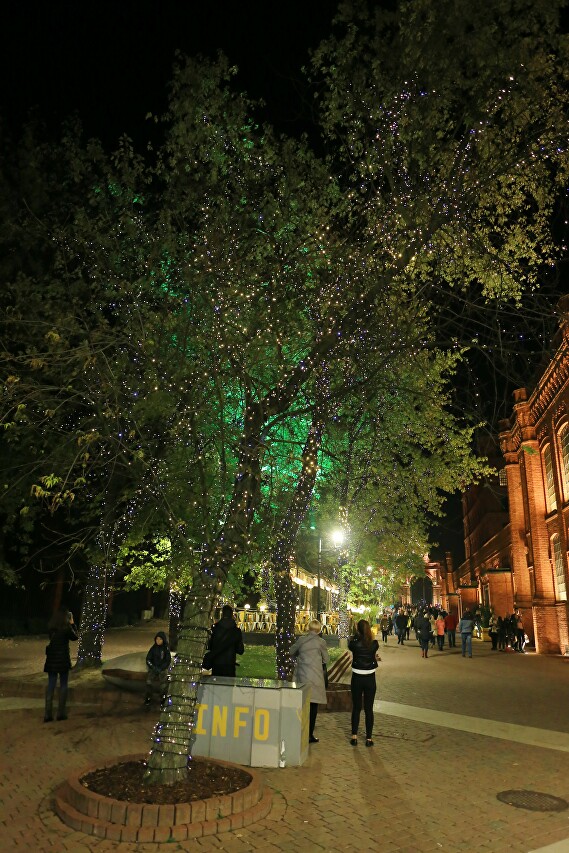
After the overthrow of the dictatorship, the company fell into a deep crisis, as before it was unprofitable and worked only at the expense of state support. In 1991, a bankruptcy application was filed, but production activity continued for more than five years. In 1999 .
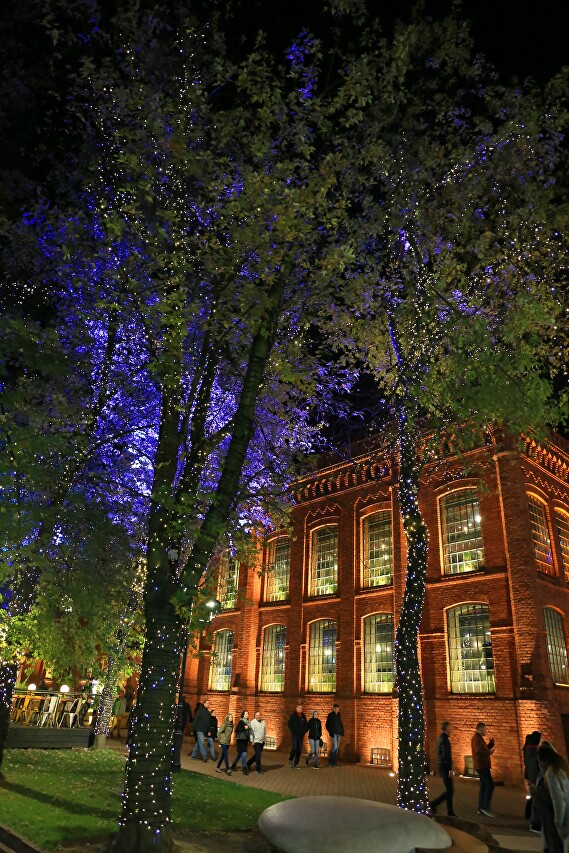
.In the late 90s, the factory was privatized and became the property of a consortium that launched a project to transform a semi-abandoned industrial zone into a modern center for trade and recreation. I must say that decisions on the preservation of historical buildings were made back in the 70s.
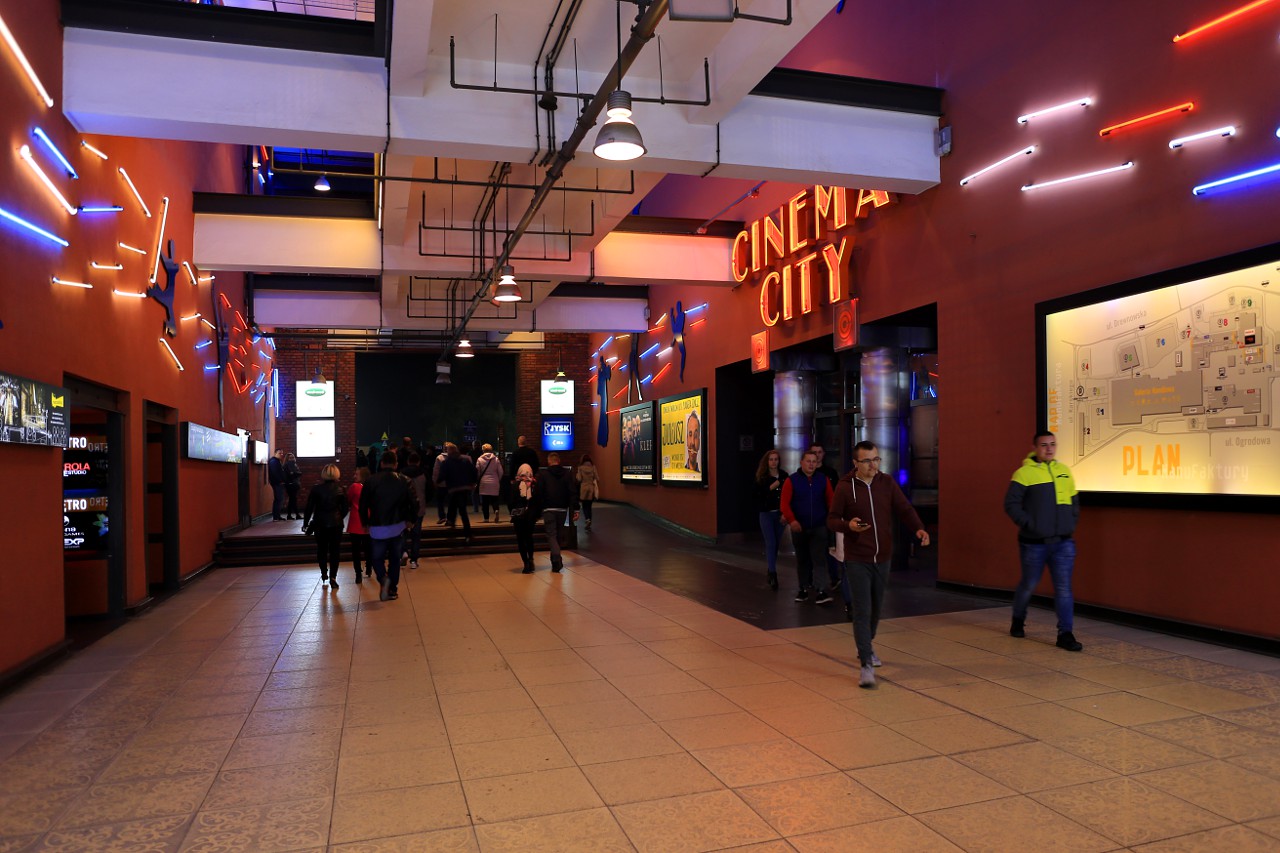
The idea of creating the project belongs to the Swiss businessman Cyprian Kosiński, a native of Lodz. Using his personal connections with the Rothschild financial group, he secured funding for the project in the amount of about 270 million euros.
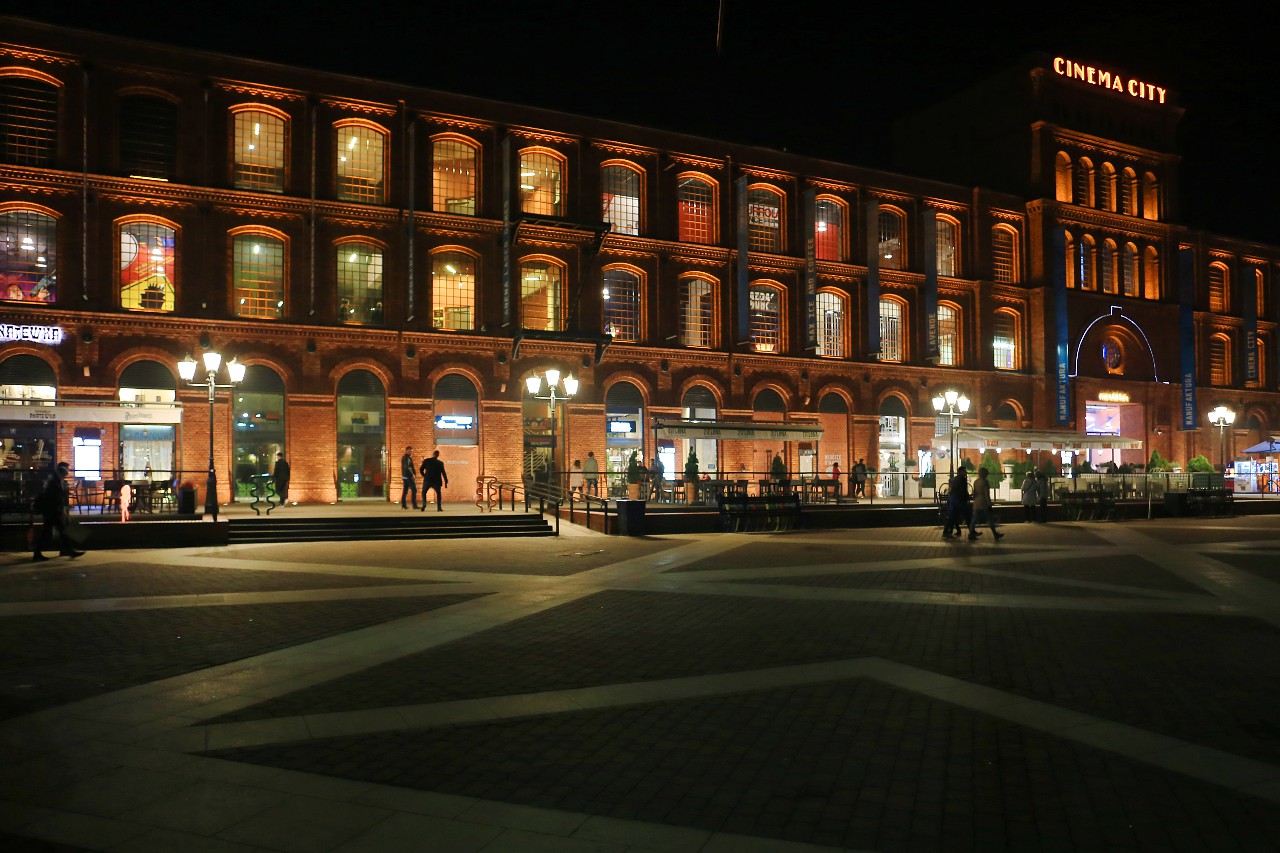
The main idea was to preserve the historical appearance of the former factory. The weaving and finishing shop buildings, the power plant and the fire station buildings were rebuilt from the outside and completely rebuilt from the inside.
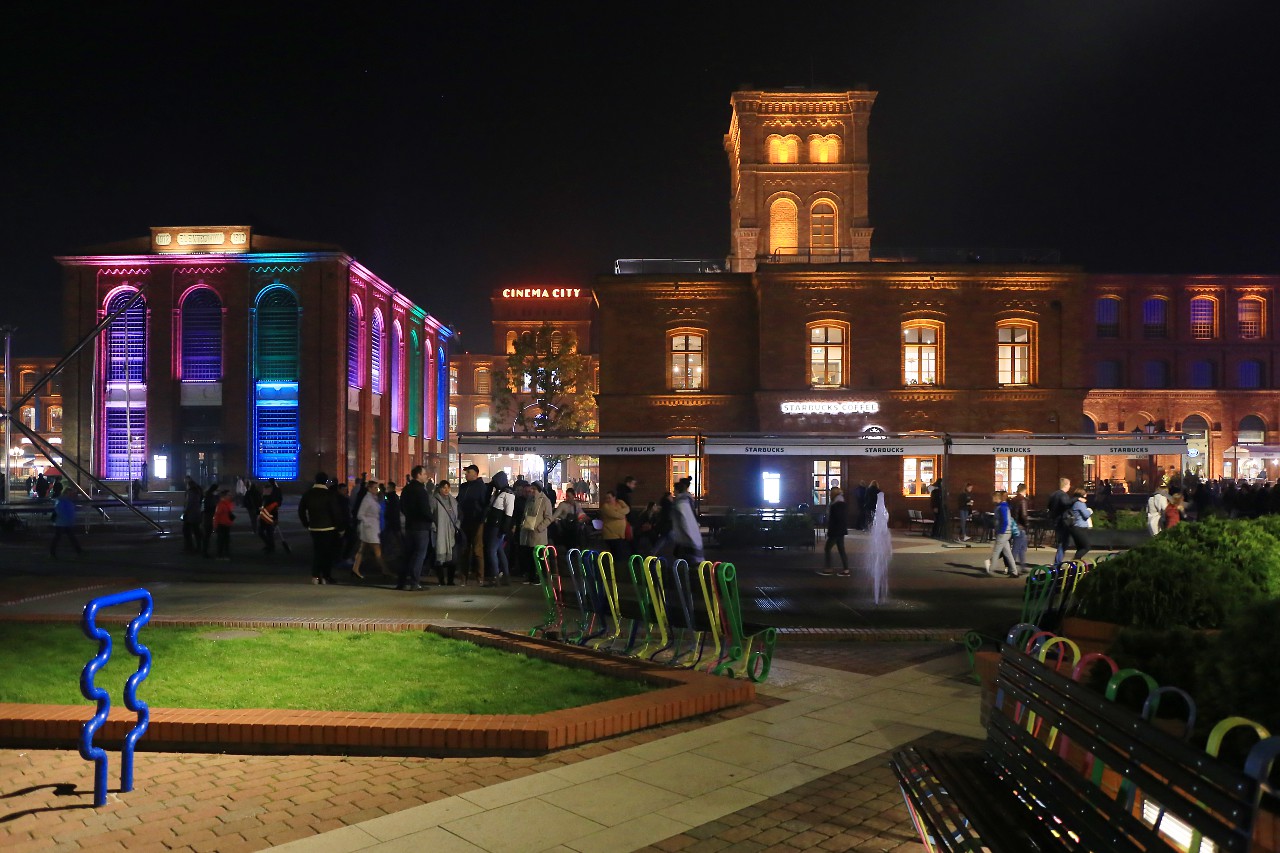
A total of 90,000 m2 of brick buildings, a market area of more than 3 hectares were restored, parking lots for 3,500 cars were built, and 600 trees were planted..
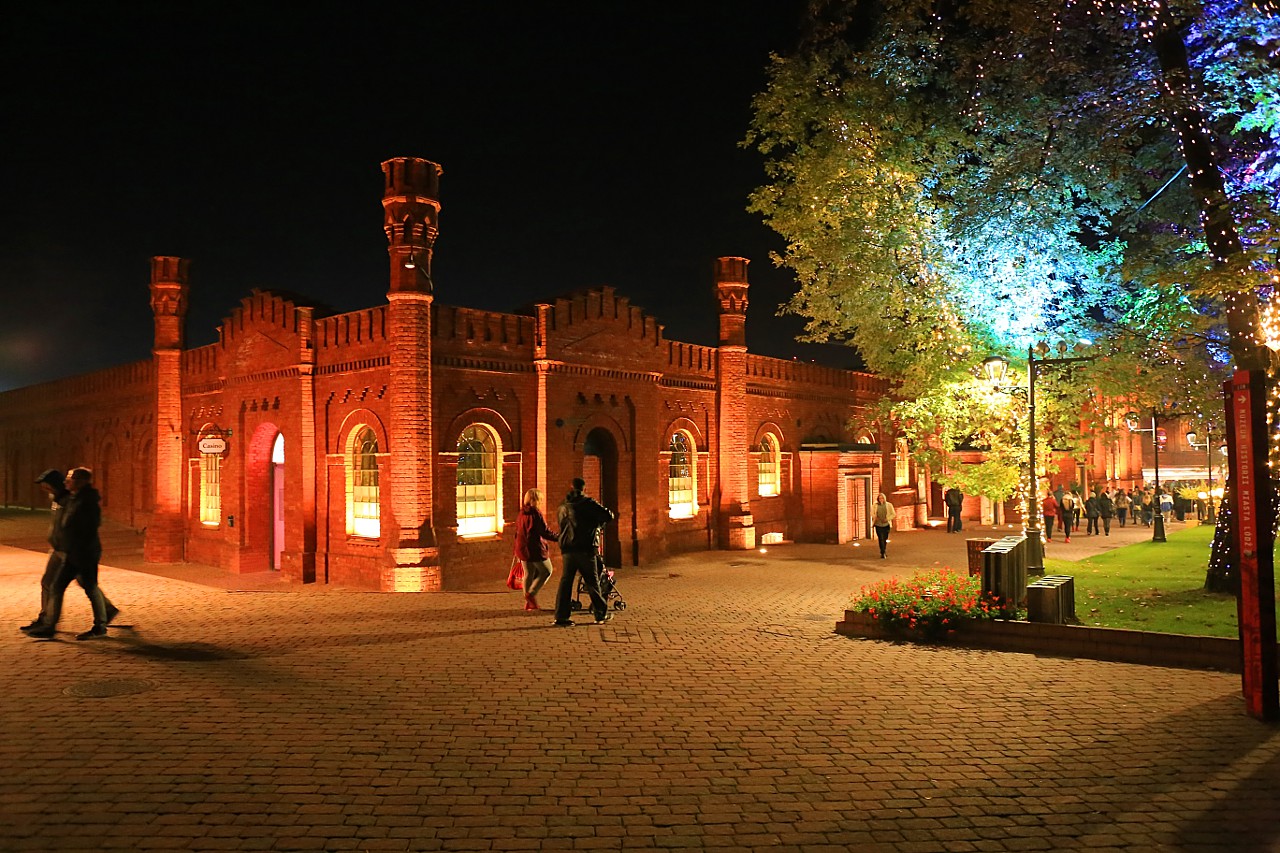
This project was the first example of the transformation of a large industrial zone in Poland, which was actively followed by other cities.
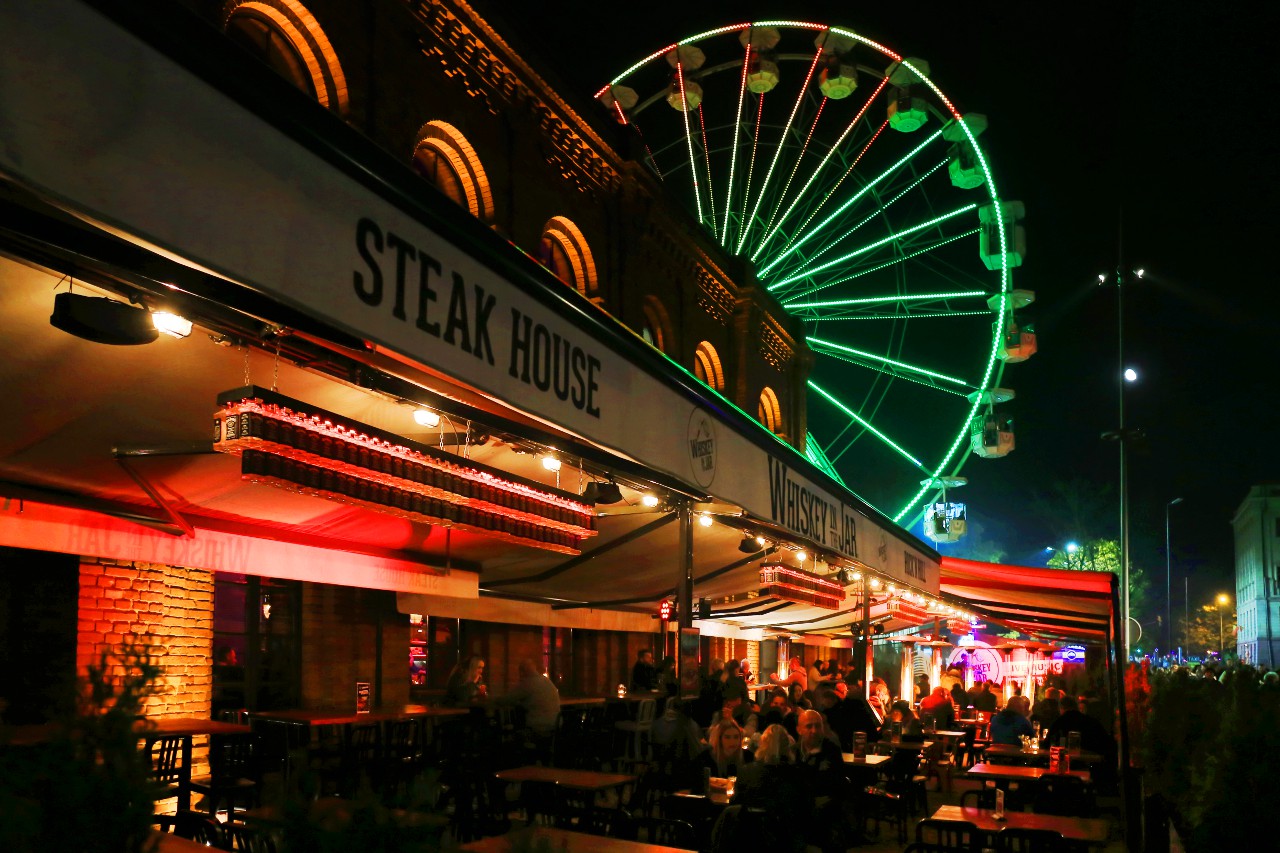
The center of the entire complex is the huge modern Manufaktura building, which houses more than one and a half hundred shops.
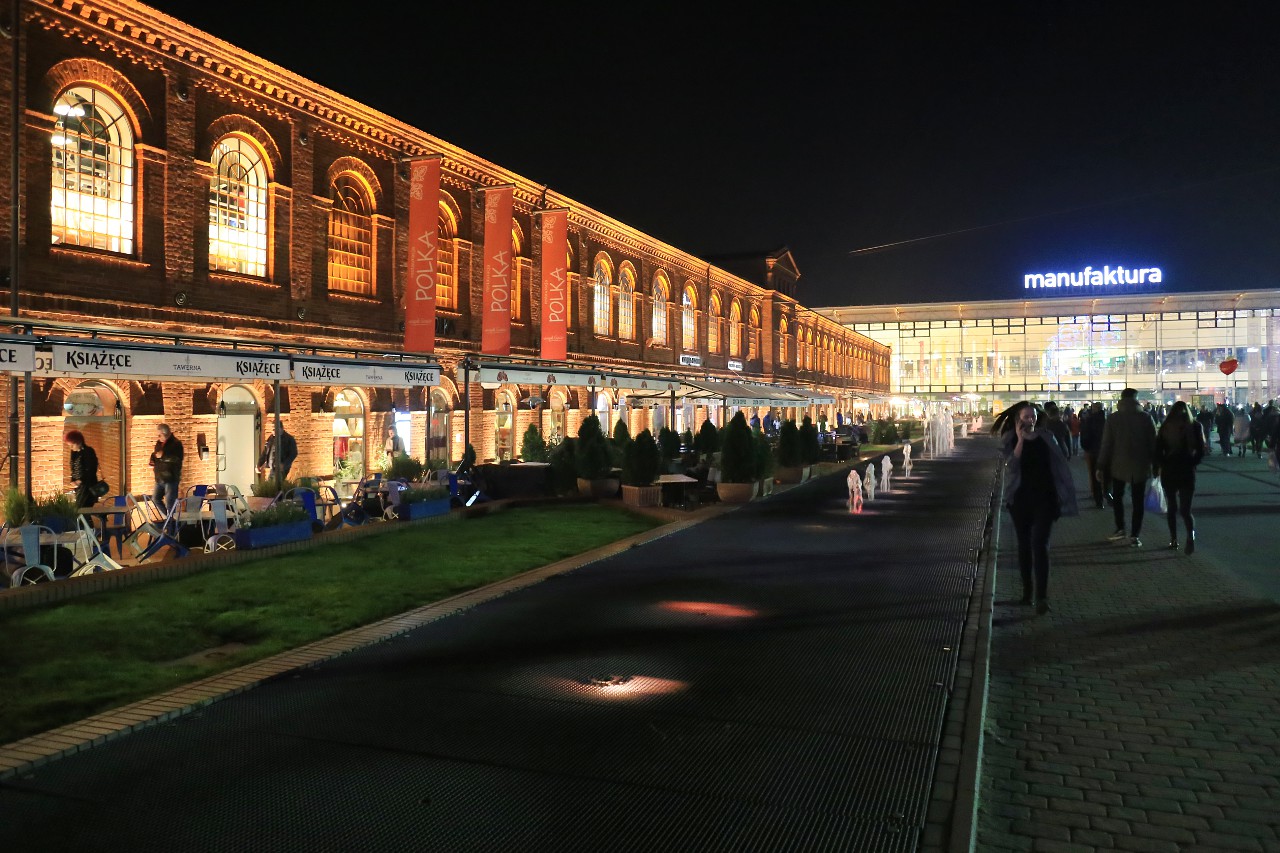
One of the attractions of the complex is the fountains.
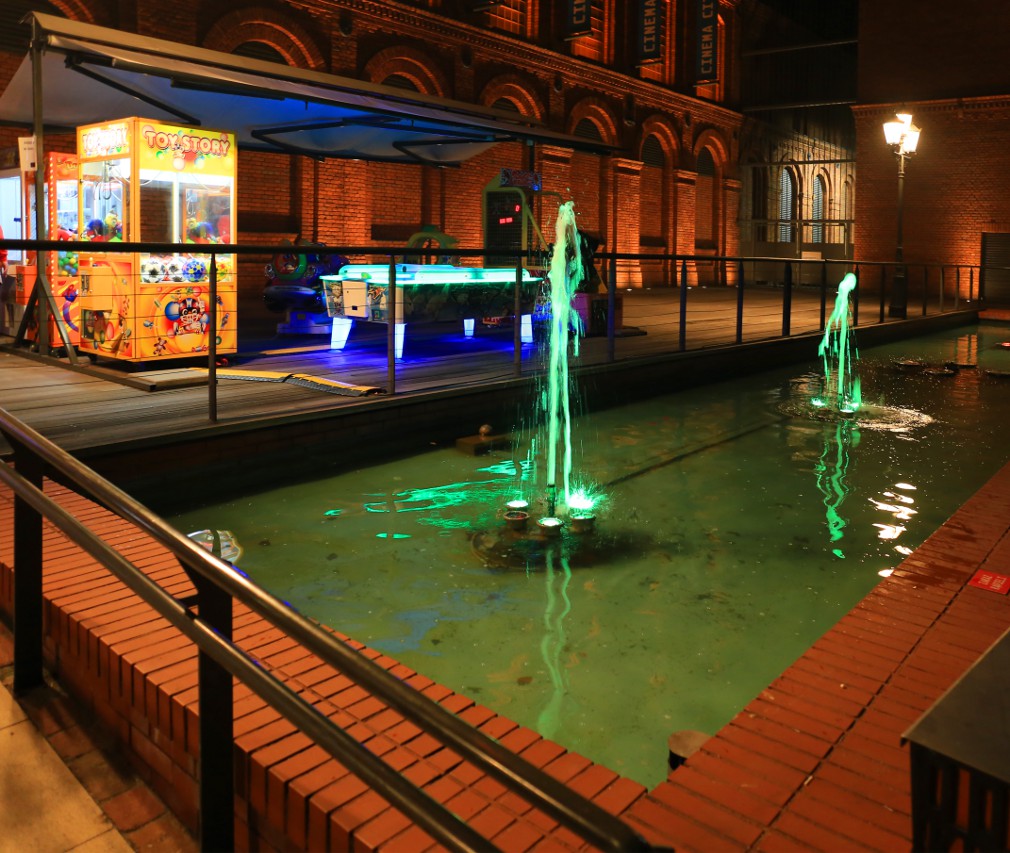
Among them is the longest in Europe, stretching for 300 meters, built by the Spanish company GHESA. Water jets in the evening are illuminated and change pitch in time with the music.
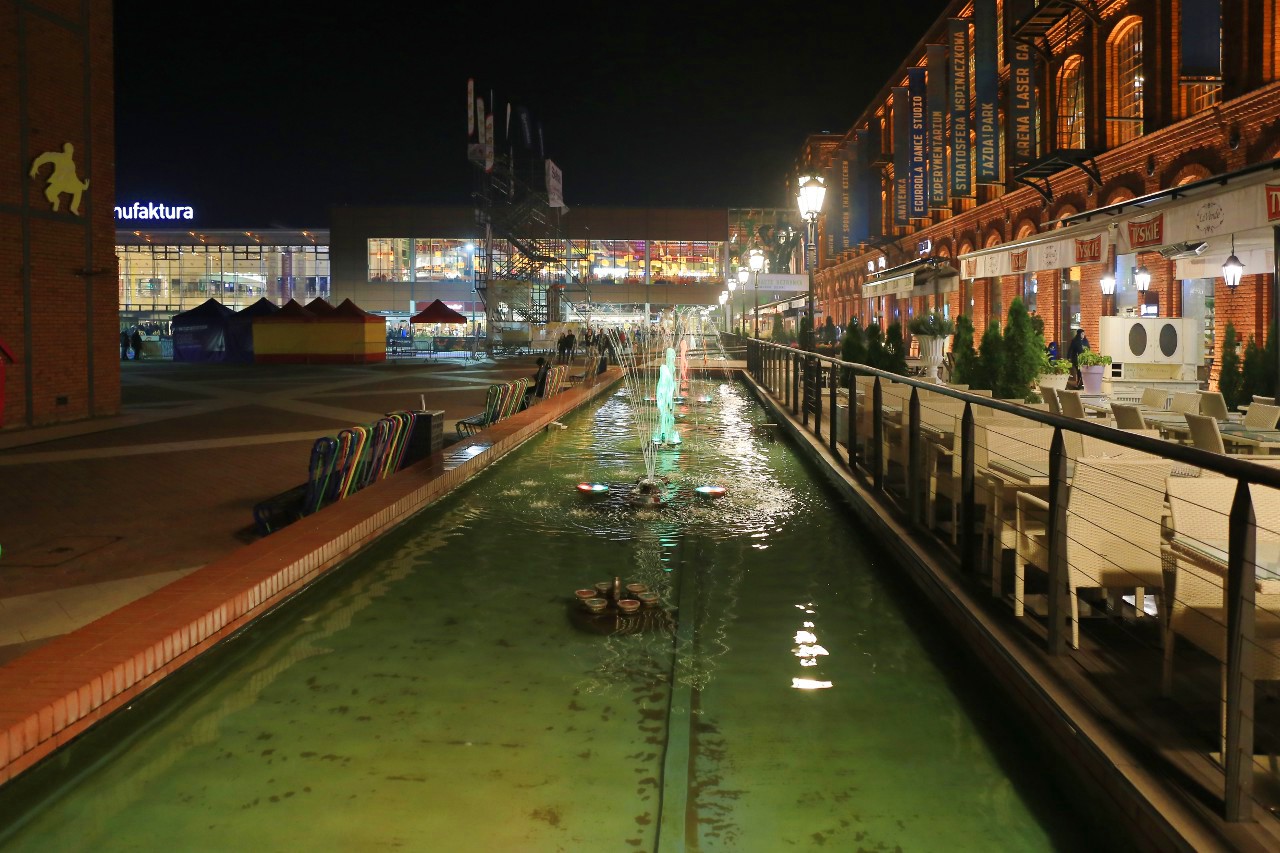
The complex includes one of the largest cinemas in Poland, the Cinema City Multiplex.
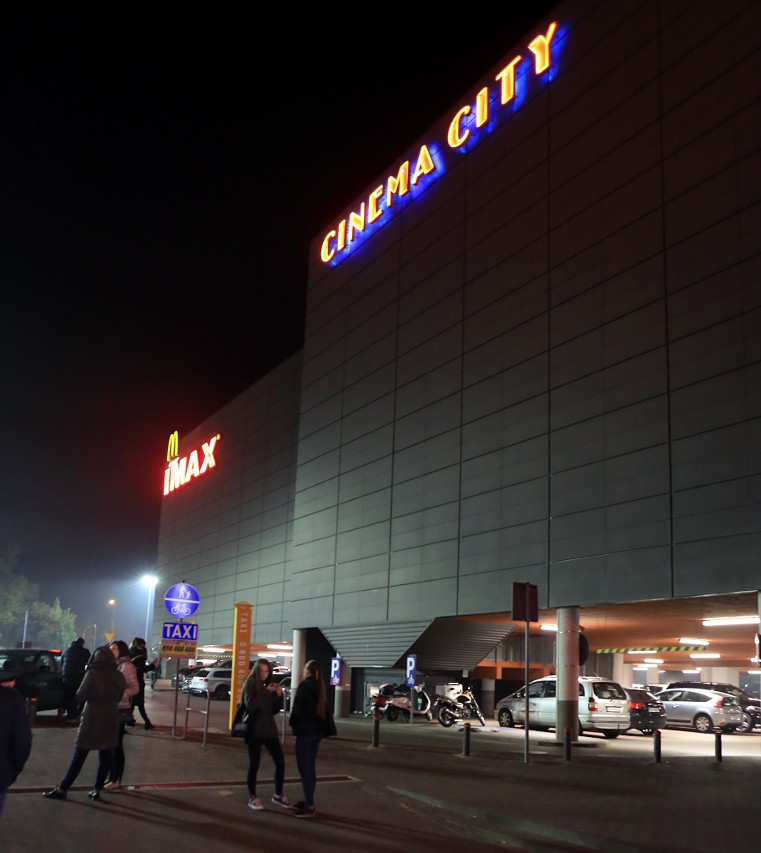
There are 15 halls, including a hall for showing 3D films and a large-format IMAX.

Concerts, sports competitions, and art installations are held on a huge square surrounded by historical buildings.
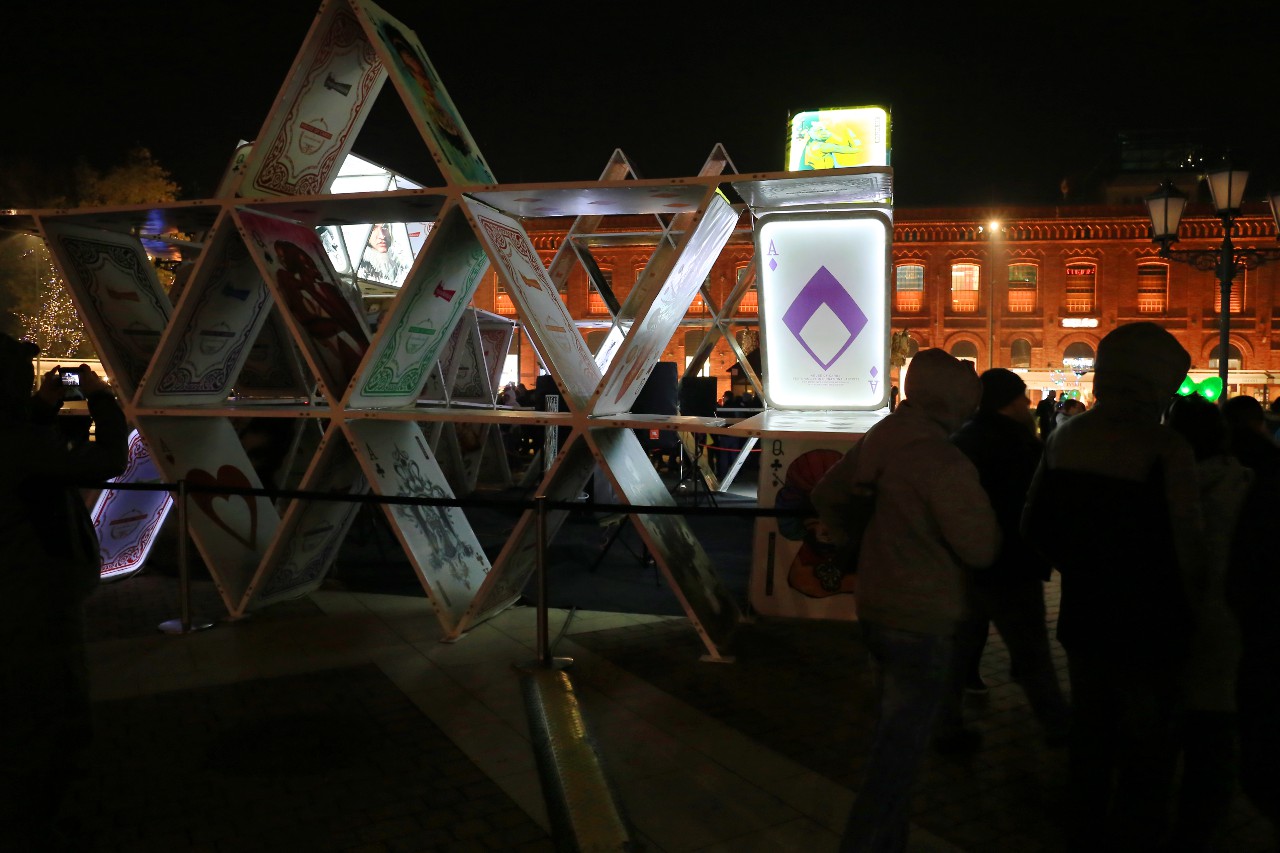
In summer, part of the area is occupied by a sandy beach, and in winter by an ice rink. Today it was possible to see huge inflatable helmets of rescuers here, as this weekend international competitions of fire and rescue services were held here.
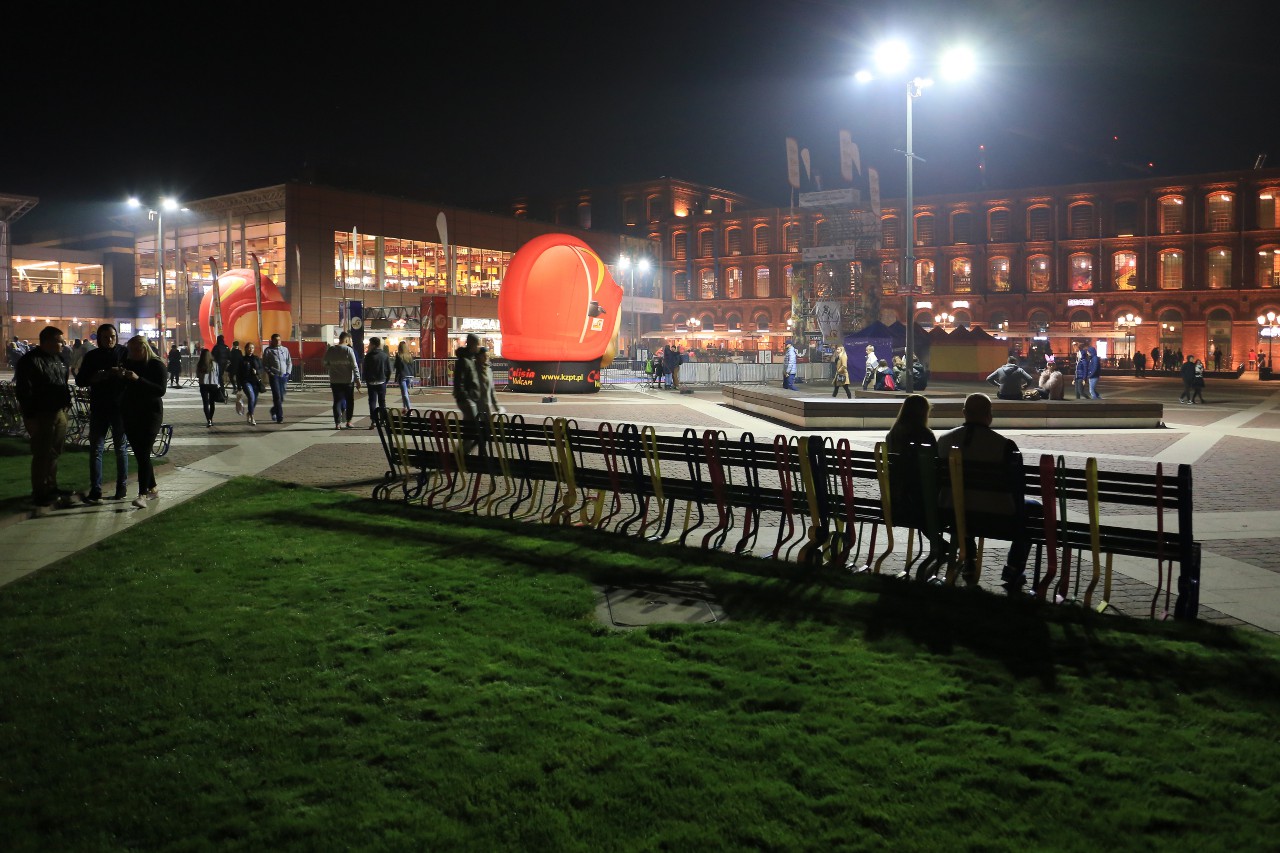
On the territory of the complex there is a bowling alley, an artificial climbing wall, a fitness club and a skate park, a branch of the Art Museum, a Children's Planetarium, a city history museum, a factory museum, and an Experimentarium technology museum.
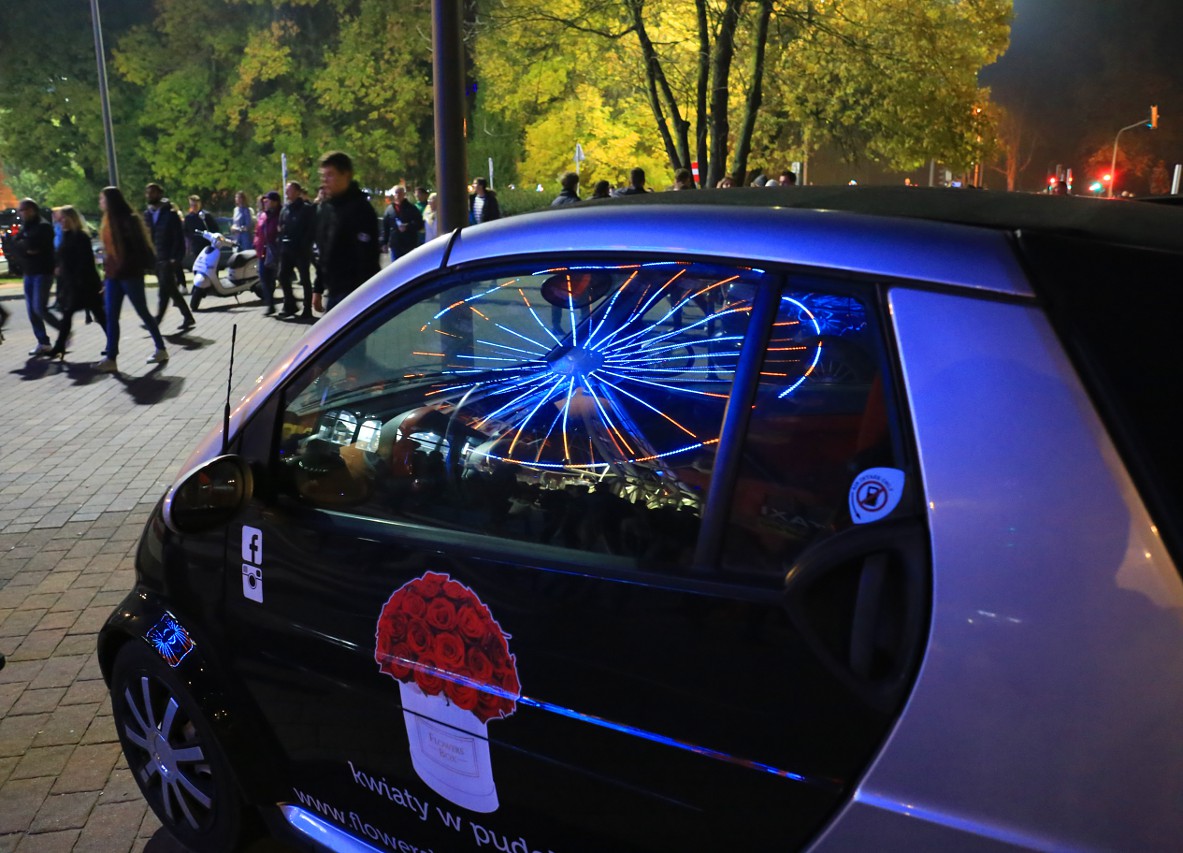
Manufaktura has about three hundred stores, including 2 hypermarkets, 12,000 square meters of office space, a bank, an international fashion center, about 60 restaurants and cafes, and a car dealership.
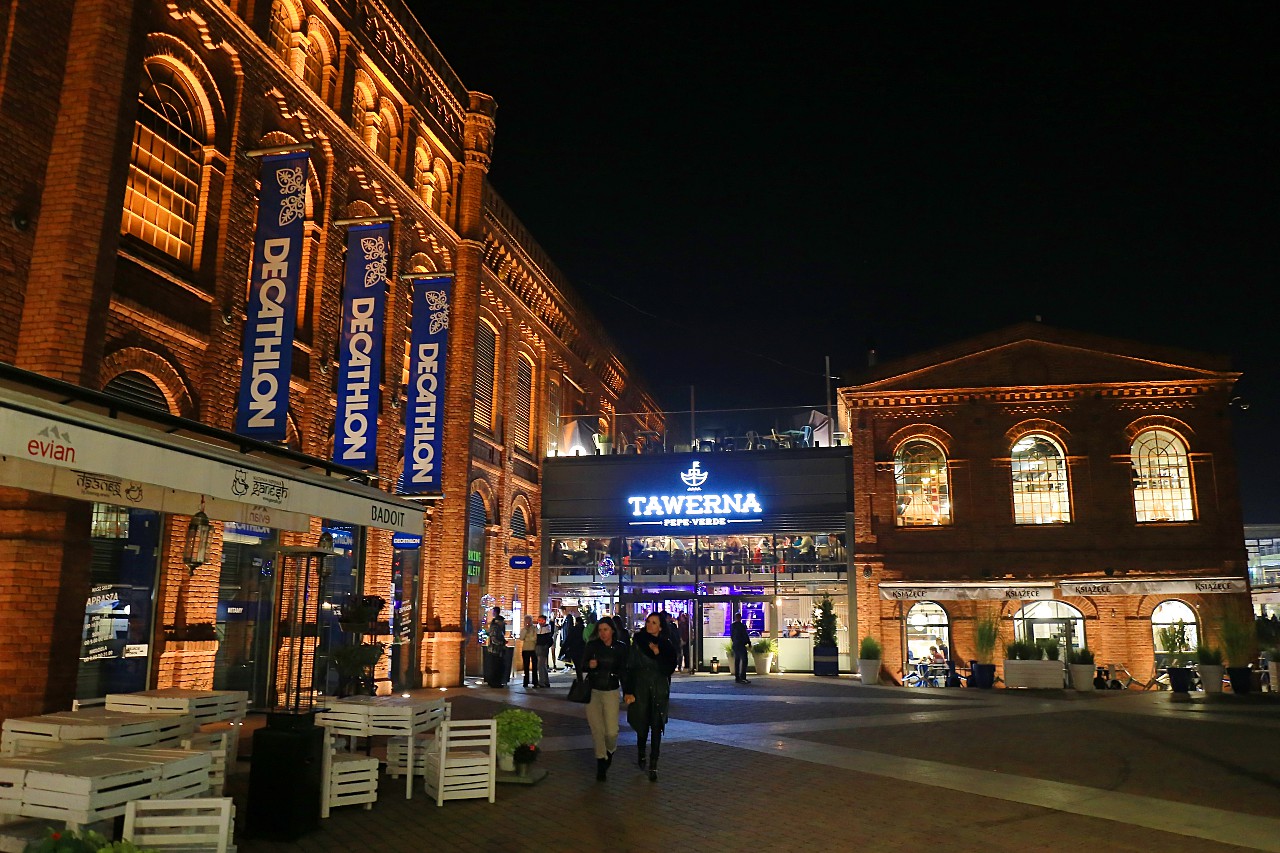
The symbol of the whole complex is the monumental gate on
Ogrodowa Street, which is often called the Clock gate (Brama z
zegarem). 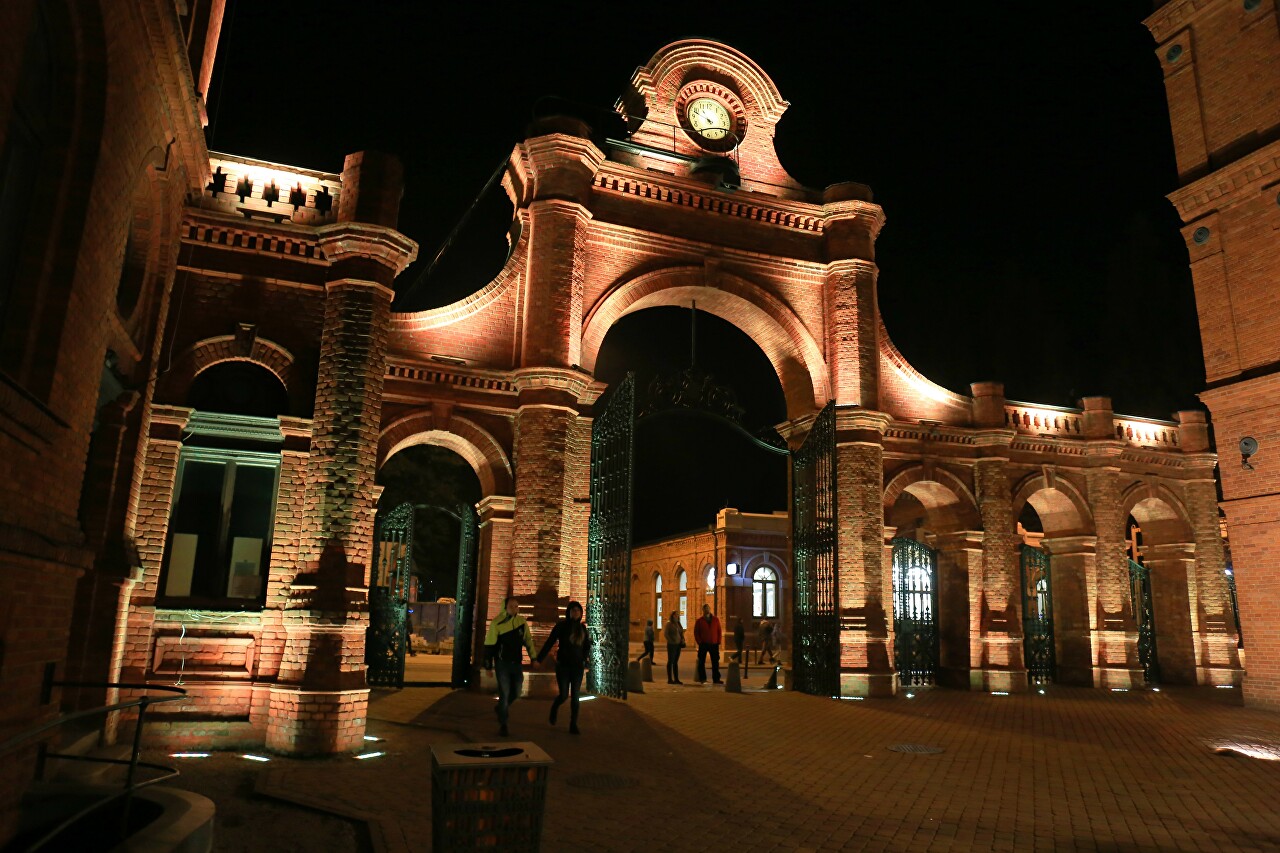
The former textile factory production building is now occupied by the four-star Andel's Lodge Hotel. The project was developed by the British architectural company Jestico + Whiles.
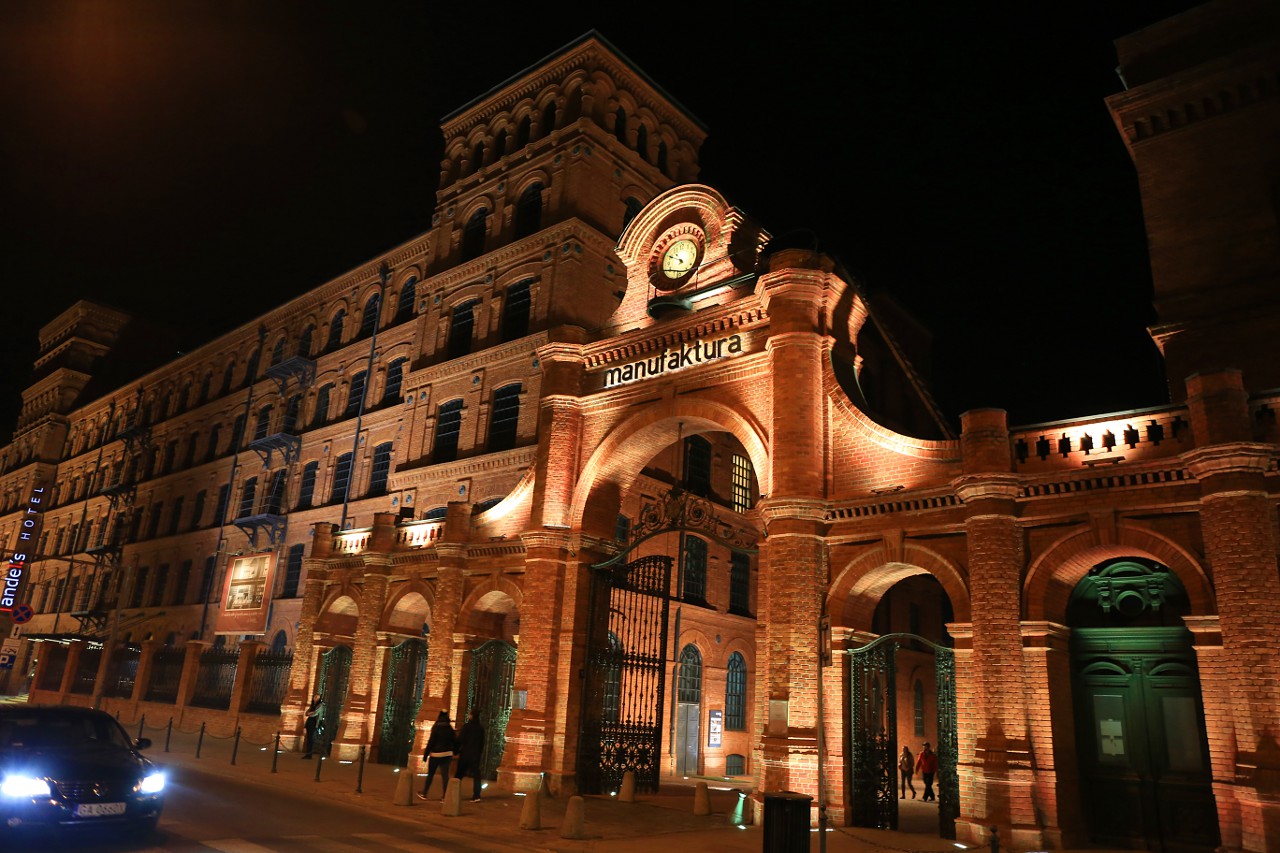
Opposite the gate is the building of the factory canteen, which has housed the Pilarsky and Volchinsky theater since 1923. After the war, there was a movie theater, then the Harlequin puppet theater. Now the building is occupied by the Biedronka supermarket.
